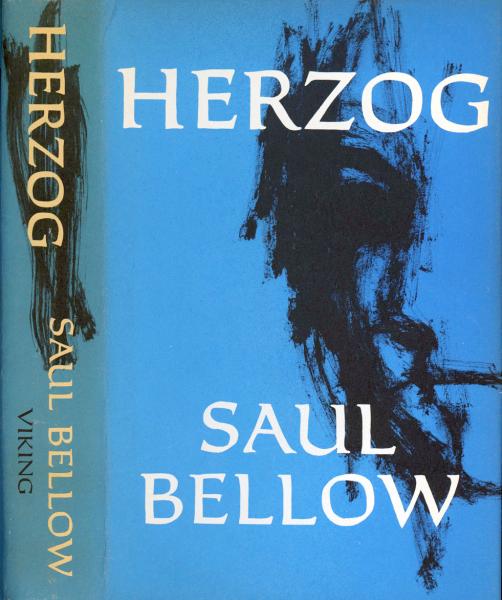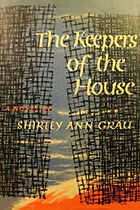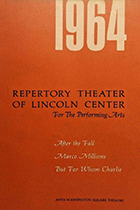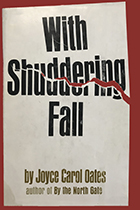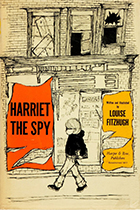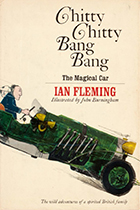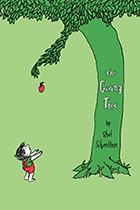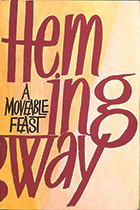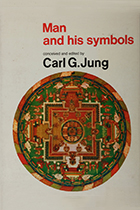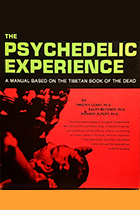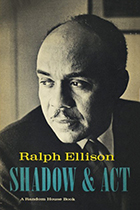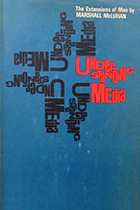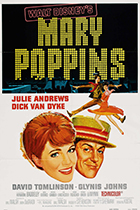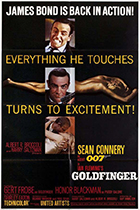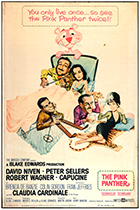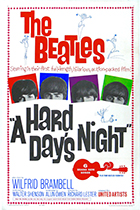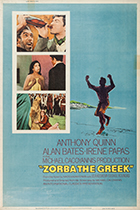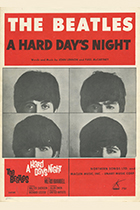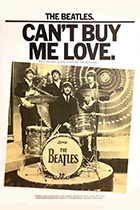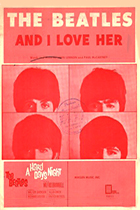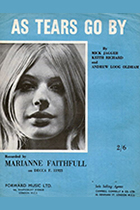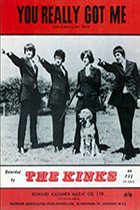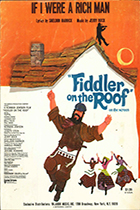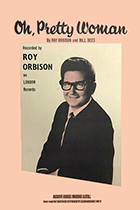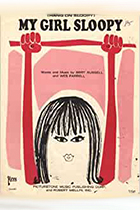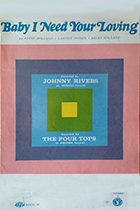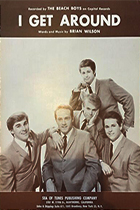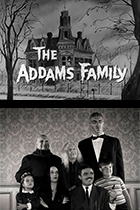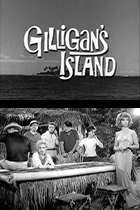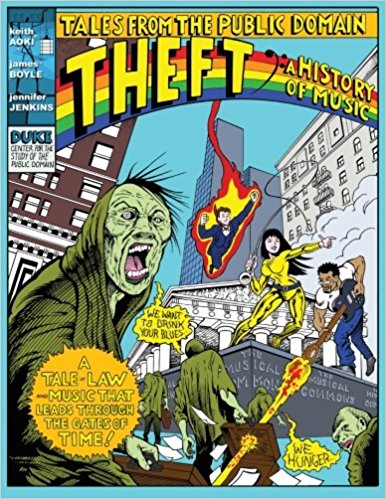
Public Domain Day 2021 Pre-1976
What Could Have Entered the Public Domain on January 1, 2021?
Under the law that existed until 1978 . . . Works from 1964! Tweet
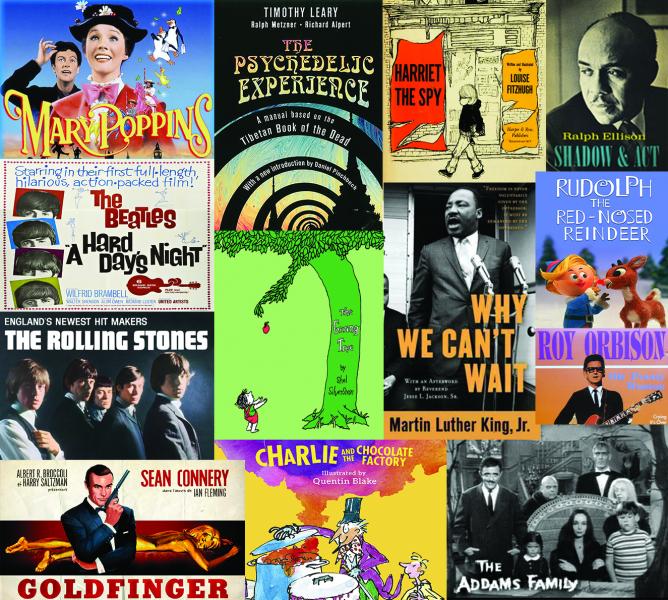
The movies Goldfinger and Mary Poppins, Dr. King’s book Why We Can’t Wait, the children’s classics The Giving Tree, Harriet the Spy, and Charlie and the Chocolate Factory, The Rolling Stones’ debut album, The Beatles’ first major film, and more. . .
Current US law extends copyright for 70 years after the date of the author’s death, and corporate “works-for-hire” are copyrighted for 95 years after publication. Prior to the 1976 Copyright Act (which became effective in 1978), the maximum copyright term was 56 years—an initial term of 28 years, renewable for another 28 years. Under those laws, works published in 1964 would enter the public domain on January 1, 2021. Under current copyright law, we’ll have to wait until 2060.1 Elsewhere on this site, we celebrate works from 1925 that will actually be entering the public domain in 2021, after a 95-year term. But 1925 was a long time ago—imagine if works from 1964 and earlier were “free as the air to common use”! Here’s what could have been.
Books
What literary works would be entering the public domain if we had the pre-1978 copyright laws? You might recognize some of the titles below.
Fiction
- Lloyd Alexander, The Book of Three
- Saul Bellow, Herzog
- Philip K. Dick, Martian Time-Slip
- Shirley Grau, The Keepers of the House (Pulitzer Prize for fiction, 1965)
- Ken Kesey, Sometimes a Great Notion
- Arthur Miller, After the Fall and Incident at Vichy
- Joyce Carol Oates, With Shuddering Fall (her first novel)
- Hubert Selby, Jr., Last Exit to Brooklyn
- Gore Vidal, Julian
Books for young readers (and adults too)
- Roald Dahl, Charlie and the Chocolate Factory
- Louise Fitzhugh, Harriet the Spy
- Ian Fleming, Chitty Chitty Bang Bang: The Magical Car
- Shel Silverstein, The Giving Tree
Non-fiction
- Ernest Hemingway, A Moveable Feast
- Carl Jung, Man and His Symbols
- Martin Luther King, Jr., Why We Can’t Wait
- Timothy Leary, The Psychedelic Experience: A Manual Based on The Tibetan Book of the Dead
- Ralph Ellison, Shadow and Act
- Marshall McLuhan, Understanding Media: The Extensions of Man
- Phyllis Schlafly, A Choice Not an Echo (her first book)
What a remarkable list. These are but a fraction of what would be entering the public domain on January 1. And this is the production of but a single year. Copyright term extensions have kept decades of such works from the public domain. Imagine these works being freely available to students, artists, and enthusiasts around the world. You could turn them into a play, or make them into a film. You could translate them into other languages. You could read them online or buy cheaper print editions, because others were free to republish them. (Empirical studies have shown that public domain books are less expensive, available in more editions and formats, and more likely to be in print—see here, here, and here.) Imagine a digital Library of Alexandria containing all of the world’s books from 1964 and earlier, where, thanks to technology, you can search, link, annotate, copy and paste. (Google Books has brought us closer to this reality, but for copyrighted books where there is no separate agreement with the copyright holder, it only shows three short snippets, not the whole book.) Instead of seeing these literary works enter the public domain in 2021, we will have to wait until 2060.
Films
Here are a few of the movies from 1964 that would have become available this year.
- Mary Poppins
- Goldfinger
- The Pink Panther
- A Hard Day’s Night
- A Fistful of Dollars
- Zorba the Greek
- Marnie
- Rudolph the Red-Nosed Reindeer
- Bikini Beach
If they were in the public domain, community theaters could show the full features. Libraries and archivists would be free to digitize and preserve them. Artists could incorporate them into fan fiction. But we won’t see them in the public domain for another 39 years. The films above are famous, so thanks to projects like the National Film Registry, we’re not likely to lose them entirely. The true tragedy is that of forgotten films that are literally disintegrating while preservationists wait for their copyright terms to expire.2
Music
What music could you have freely used on January 1, 2021? 1964 brought us the debut albums from The Rolling Stones and The Kinks, The Beatles’ album A Hard Day’s Night, the theme songs from television shows including The Addams Family and Gilligan’s Island, and much more.
- The Beatles, A Hard Day’s Night, Can’t Buy Me Love, And I Love Her (w & m John Lennon & Paul McCartney)
- It’s All Over Now (w & m Bobby Womack & Shirley Womack, recorded by The Rolling Stones)
- As Tears Go By (w & m Mick Jagger, Keith Richards, & Andrew Loog Oldham, recorded by Marianne Faithfull)
- You Really Got Me (w & m Ray Davies, recorded by The Kinks)
- Songs from Fiddler on the Roof, including If I Were a Rich Man (w Sheldon Harnick & m Jerry Bock)
- Oh, Pretty Woman (w & m Roy Orbison & Bill Dees)
- Hang on Sloopy (as “My Girl Sloopy”, w & m Bert Russell & Wes Farrell)
- Baby I Need Your Loving (w & m Eddie Holland, Lamont Dozier, & Brian Holland)
- I Get Around (w & m Brian Wilson)
- The theme song from The Addams Family (w & m Vic Mizzy)
- The Ballad of Gilligan’s Isle (w & m Sherwood Schwartz & George Wyle)
You would be free to download sheet music for these songs, publicly perform them, or set a short film to them, all without permission or fee.3 You could quote the full lyrics in a book or article, without fear of a lawsuit. Today these musical works remain copyrighted until 2060.
Note that the list above refers to the “musical composition”—the underlying music and lyrics—and the songwriters who wrote them, such as Bobby and Shirley Womack for “It’s All Over Now.” It is those compositions that could have entered the public domain in 2021. Back in 1964, federal copyright law only covered compositions, and did not cover the "sound recordings" embodying particular performances of them, such as The Rolling Stones' performance of "It’s All Over Now." This has changed—under current law, compositions and sound recordings are covered by two separate copyrights.4 (To learn more about music copyright, and the rich history of borrowing in music, see our free comic book!)
Science from 1964—copyrighted research, still behind paywalls
A distressing number of scientific articles from 1964 are still behind a paywall. To read them, you have to pay a fee, or have a subscription or account.5 Nature charges $32 for a single PDF from 1964 (though you can rent the article with restrictions for the low price of $8.99). JAMA charges $30. Science requires $30 to access a single article from 1964 for 1 day—but that’s not all. When you purchase digital access to a Science article, you also have to agree to the following restrictions and conditions: “You may view, download, and/or print the article for your personal scholarly, research, and educational use,” but may not distribute or post it, and you must agree both to accept cookies and be contacted from time to time about the publisher’s products. Of course, many scientists will have institutional access to these journals, but this access is not guaranteed—even institutions such as Harvard have considered canceling their subscriptions because they could no longer afford the escalating prices of major journal subscriptions. (To learn more about how this publishing model impedes science, and the need for open access to research and scholarship, you can watch the recent documentary Paywall: The Business of Scholarship.)
It’s remarkable to find scientific research from 1964 hidden behind publisher paywalls. Thankfully, some publishers have made older articles available in full online, so that you can read them, even though it may still be illegal to copy and distribute them. In addition, some older articles have been made available on third party websites, but this is not a stable solution for providing reliable access to science. Third party postings can be difficult to find or taken down, links can get broken, and would-be posters may be deterred by the risk of a lawsuit. Under the pre-1978 copyright term, all of this history would be free to scholars, students, and enthusiasts.
Not all scientific publishers work under this kind of copyright scheme. “Open Access” scientific publications, like those of the Public Library of Science, are under Creative Commons licenses, meaning that they can be copied freely from the day they are published.
Works from 1992!
Most of the works highlighted here are famous—that is why we included them. And if that fame meant that the work was still being exploited commercially 28 years after its publication, the rights holders would probably renew the copyright. But we know from empirical studies that 85% of authors did not renew their copyrights (for books, the number is even higher—93% did not renew), since most works exhaust their commercial value very quickly.
Under the law that existed until 1978 . . . Up to 85% of all copyrighted works from 1992 might have been entering the public domain on January 1, 2021.
That means that all of these examples from 1964 are only the tip of the iceberg. If the pre-1978 laws were still in effect, we could have seen 85% of the works published in 1992 enter the public domain on January 1, 2021. Imagine what that would mean to our archives, our libraries, our schools and our culture. Such works could be digitized, preserved, and made available for education, for research, for future creators. Instead, they will remain under copyright for decades to come.
Perhaps the most troubling aspect of the current copyright term is that in most cases, the cultural harm is not offset by any benefit to an author or rights holder. Unlike the famous works highlighted here, the vast majority of works from 1964 do not retain commercial value,6 but they are off limits to users who do not want to risk a copyright lawsuit. This means that no one is benefiting from continued copyright, while the works remain both commercially unavailable and culturally off limits. The public loses the possibility of meaningful access for no good reason. You can read more about the current costs associated with orphan works—works that are still presumably under copyright, but with no identifiable or locatable copyright holder—here and here. Importantly, the US Copyright Office has been engaged in efforts to find solutions to the orphan works problem. However, unlike other countries, the US has not enacted any such solutions.
1 The Copyright Term Extension Act expanded the term for works published in 1964 to 95 years from the date of publication, so long as the works were published with a copyright notice (which is generally the case with famous works such as those we are highlighting). You can read more about copyright terms from this excellent chart and from the US Copyright Office’s guide.
It is difficult to determine whether foreign works are in the public domain in the U.S. Generally speaking, as a result of international agreements, foreign works published after 1925 are still under copyright in the US as long as one of the following is true: they were published in compliance with US formalities, they were still copyrighted in their home countries as of 1996, or they were then published in the US within 30 days of publication abroad. You can learn more about copyright terms for foreign works from the Copyright Office guide here.
2 The law allows libraries and archives (not preservationists generally) to digitize works during the last 20 years of their copyright term, but only in limited circumstances: the library or archive first has to determine through a “reasonable investigation” that the work is not being commercially exploited and that they cannot obtain another copy of it at a reasonable price.
3 Copyright law has a “compulsory license” that allows people to make recordings of in-copyright compositions if they pay a standard royalty and comply with the license terms. However, this compulsory license doesn’t cover printing sheet music, making public performances, synchronizing audio with video, or making “derivative works.” And, of course, it requires payment; public domain compositions can be freely recorded.
4 Federal copyright did not cover sound recordings until 1972 (though pre-1972 sound recordings were protected under some states’ laws). However, a new law from 2018 called the Music Modernization Act (“MMA”) has federalized copyright for pre-1972 sound recordings, in order to clear up the confusing patchwork of state law protection. It gives sound recordings from the 1960s federal copyright protection until February 15, 2067. Importantly however, unlike the rest of copyright law, the MMA allows for uses of orphan works: if those older recordings are not being commercially exploited, there is a process for lawfully engaging in noncommercial uses. For more information, please see the Copyright Office’s summary. Note that if you are performing or rerecording a song, quoting its lyrics, or writing a new version, you are only using the musical composition, not the sound recording. Rights over sound recordings are implicated only if you use that particular performance of the song, for example by “sampling” it or using it as a soundtrack.
5 Sometimes you can see the first archived journal article you choose, but the remaining articles are behind a paywall. And even when 1964 articles are readable, they’re still copyrighted—these publishers won’t allow you to reproduce or distribute them without permission.
6 A Congressional Research Service study indicated that only 2% of works between 55 and 75 years old continue to retain commercial value.
Written by Jennifer Jenkins. Special thanks to our tireless and talented research maven and website guru Balfour Smith for building this site and compiling the list of works from 1925.
 Public Domain Day 2021 by Duke Law School's Center for the Study of the Public Domain is licensed under a Creative Commons Attribution-ShareAlike 3.0 Unported License.
Public Domain Day 2021 by Duke Law School's Center for the Study of the Public Domain is licensed under a Creative Commons Attribution-ShareAlike 3.0 Unported License.




